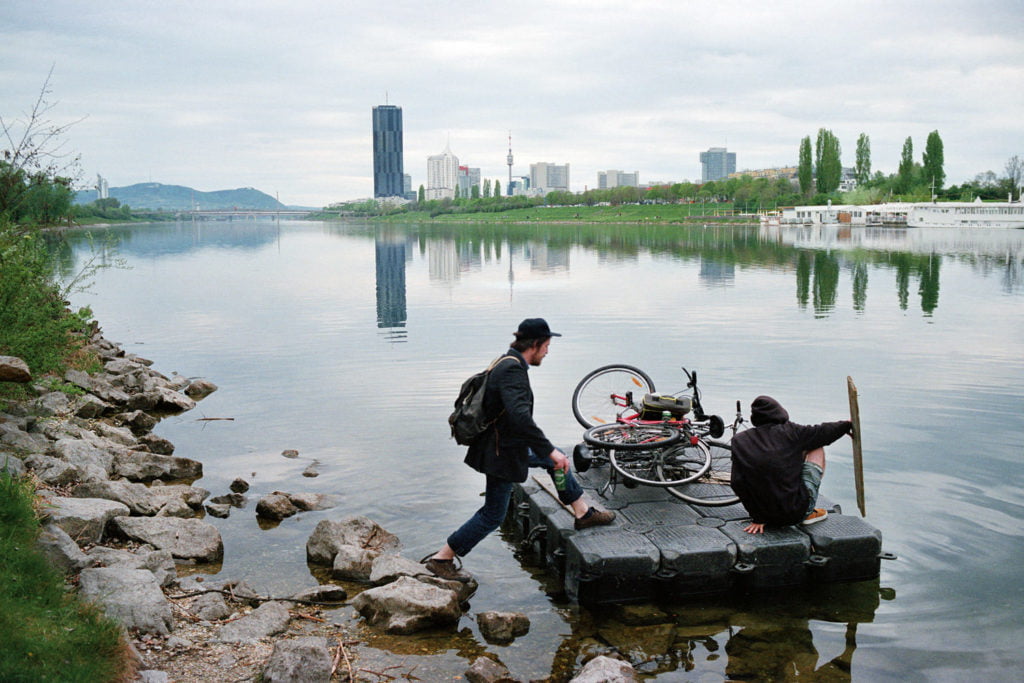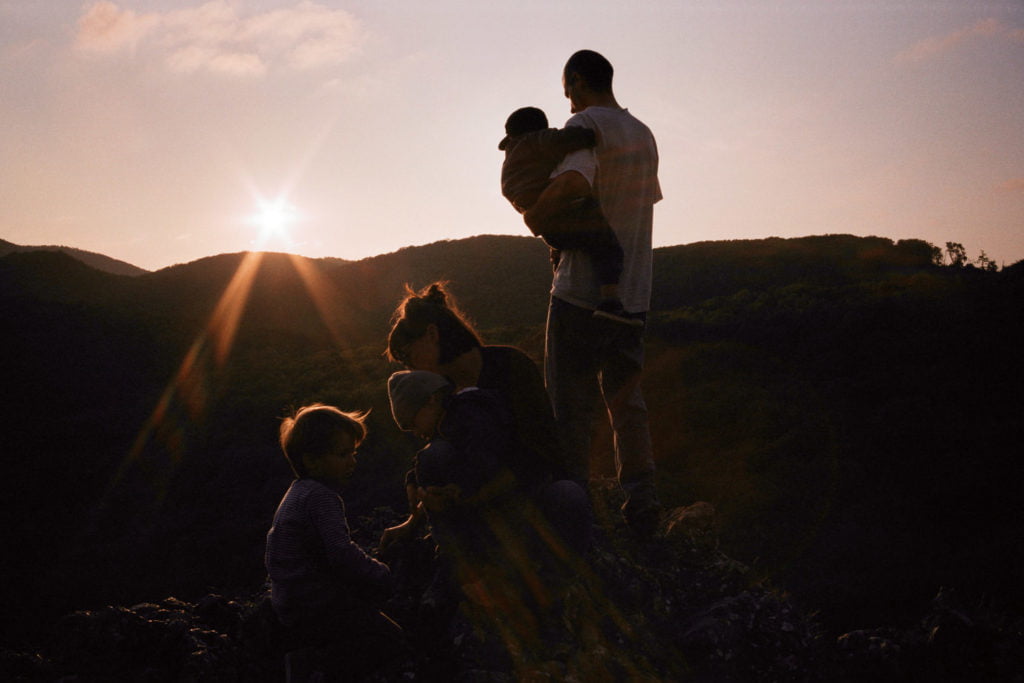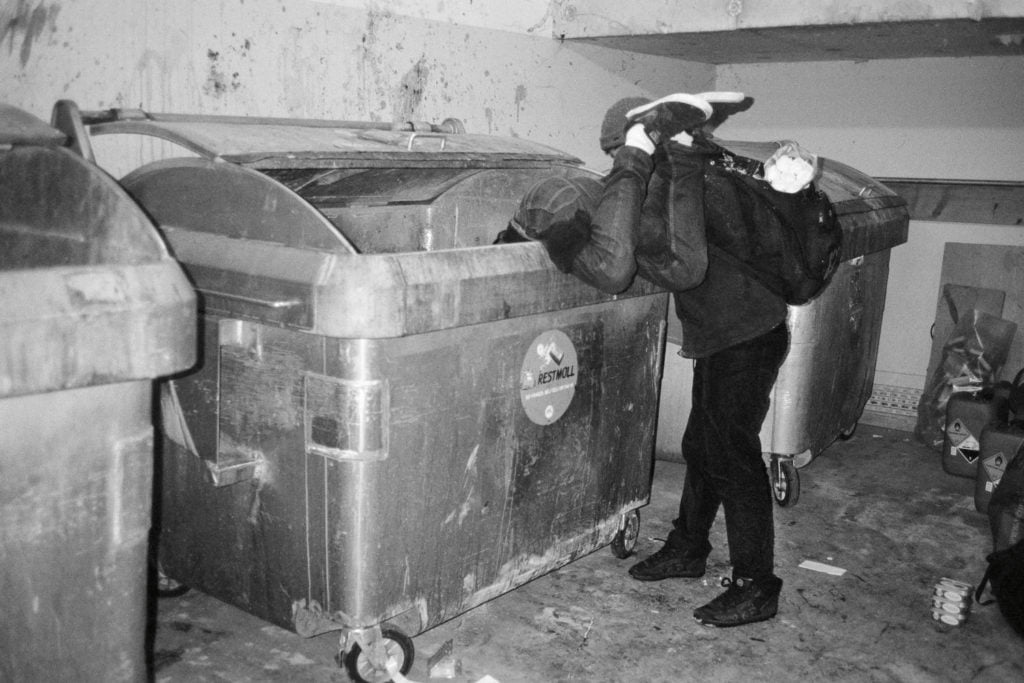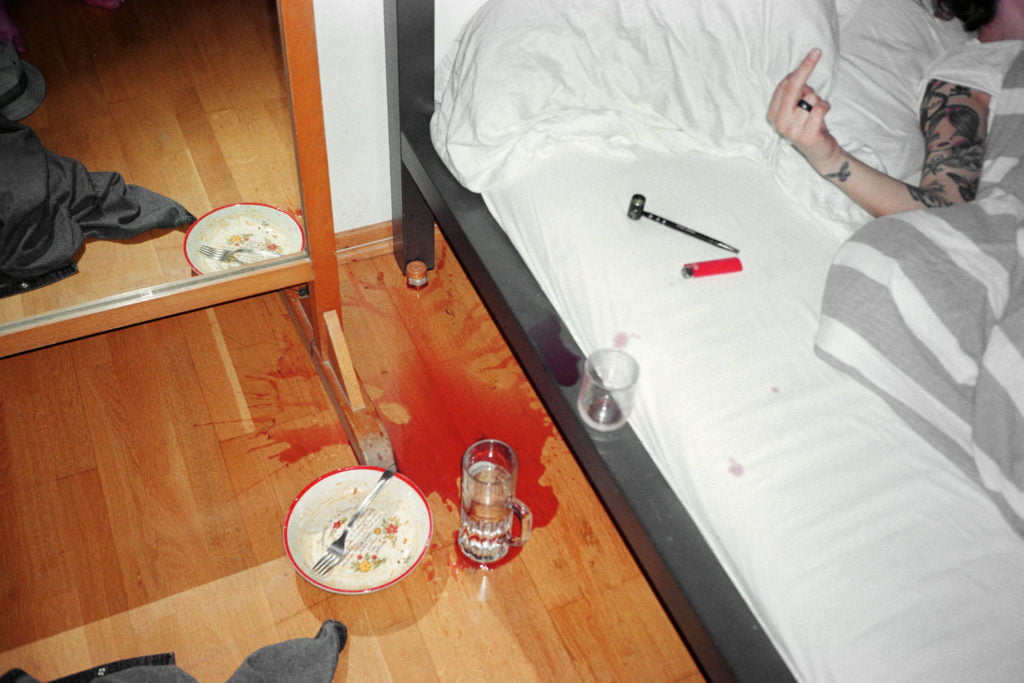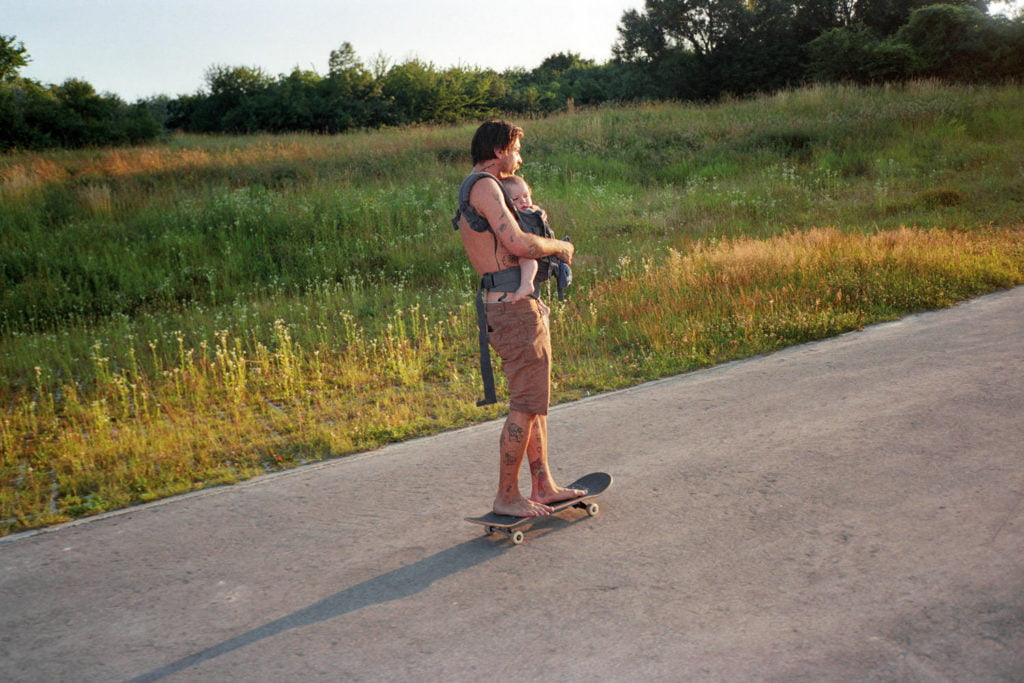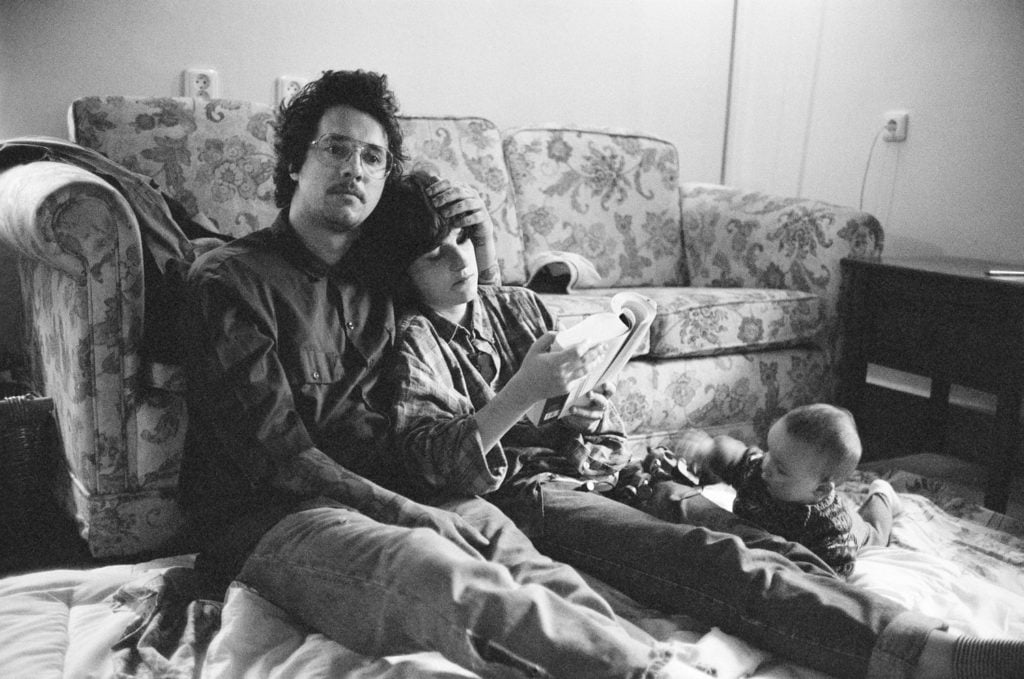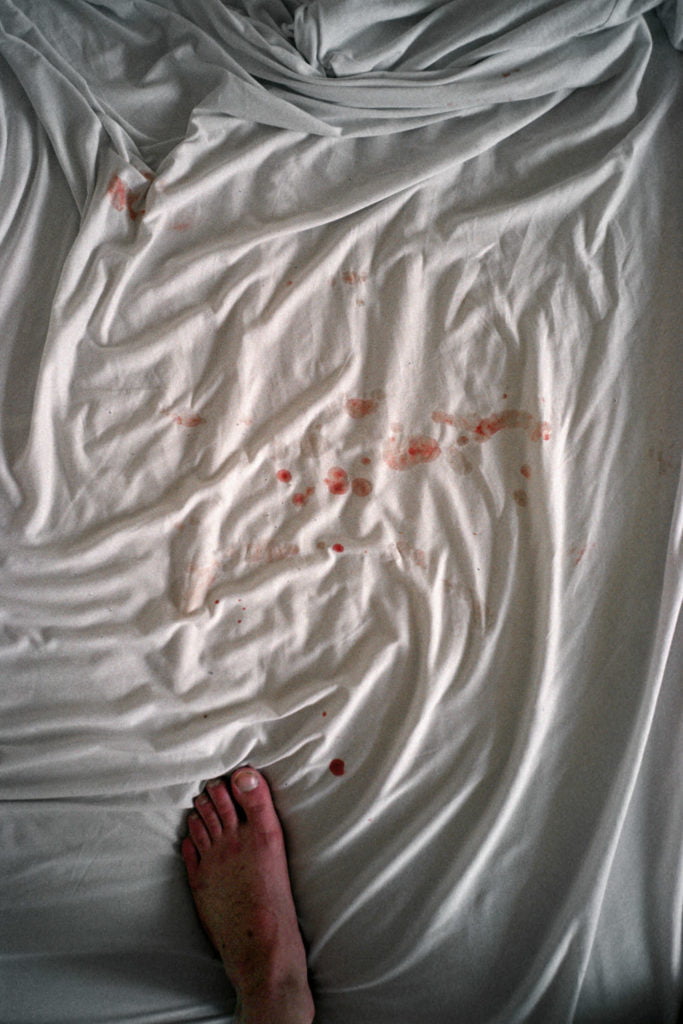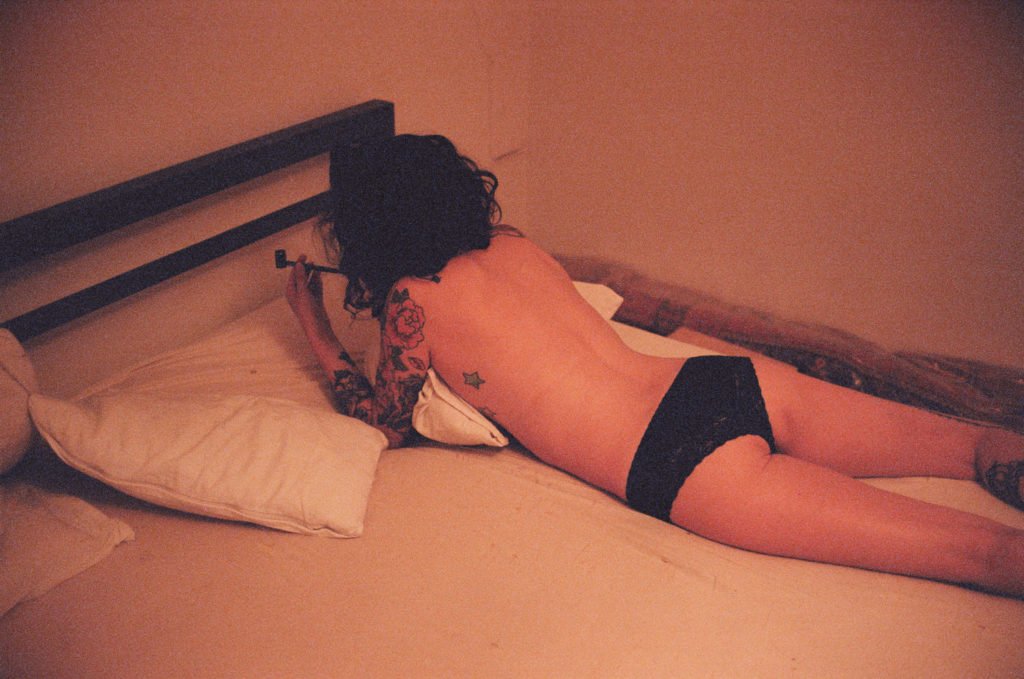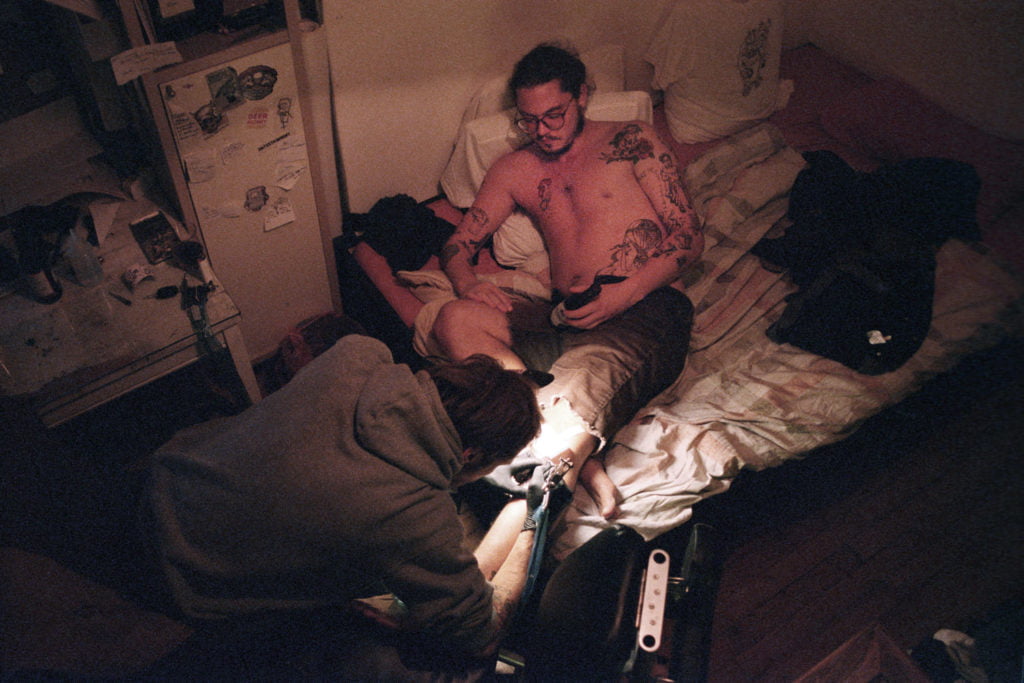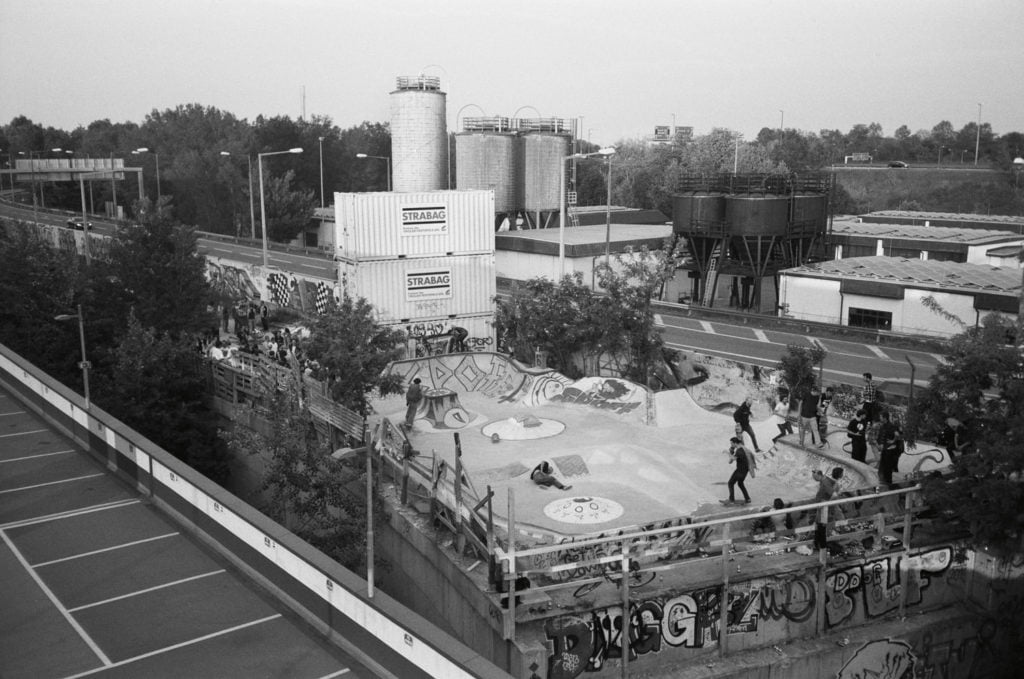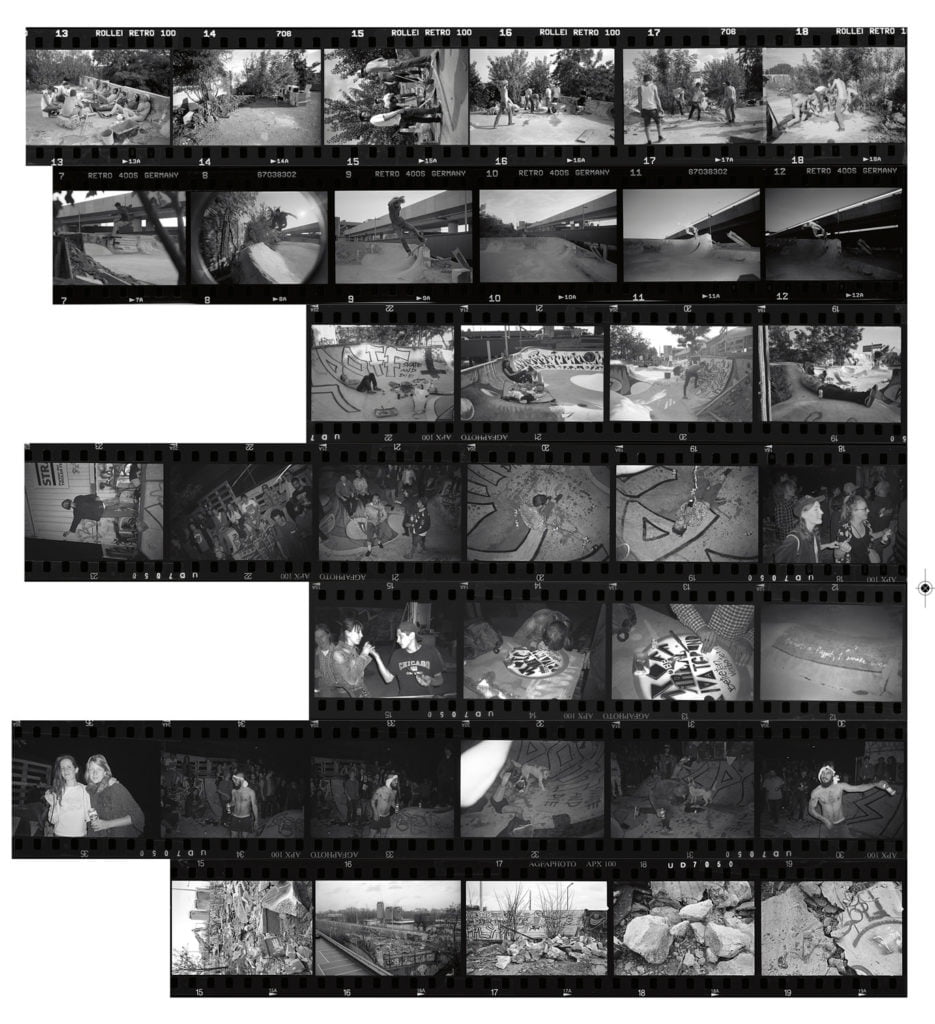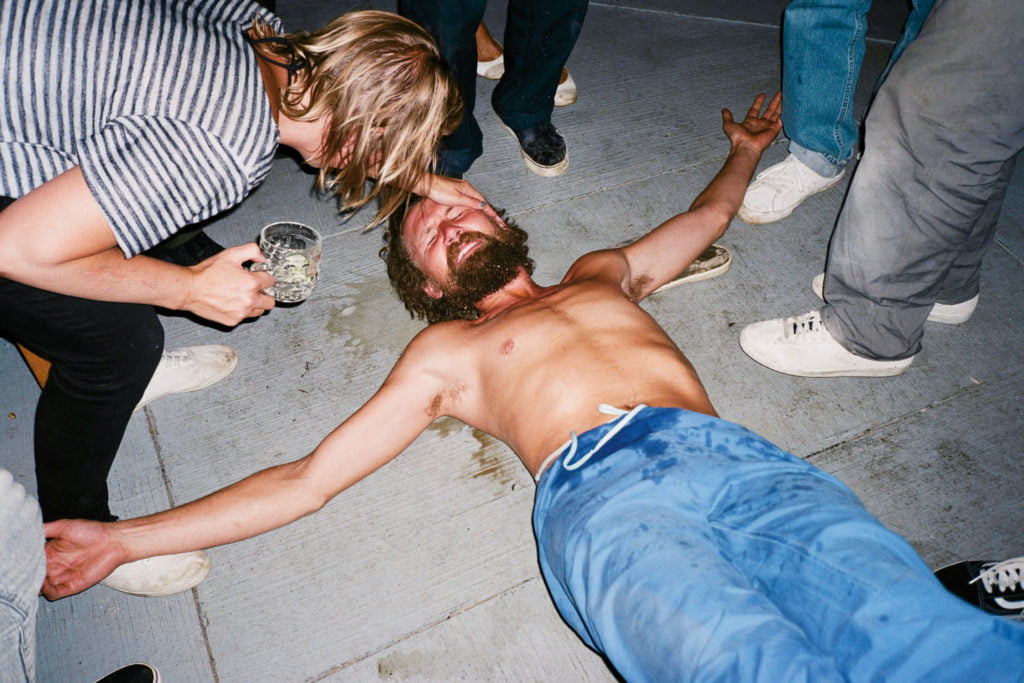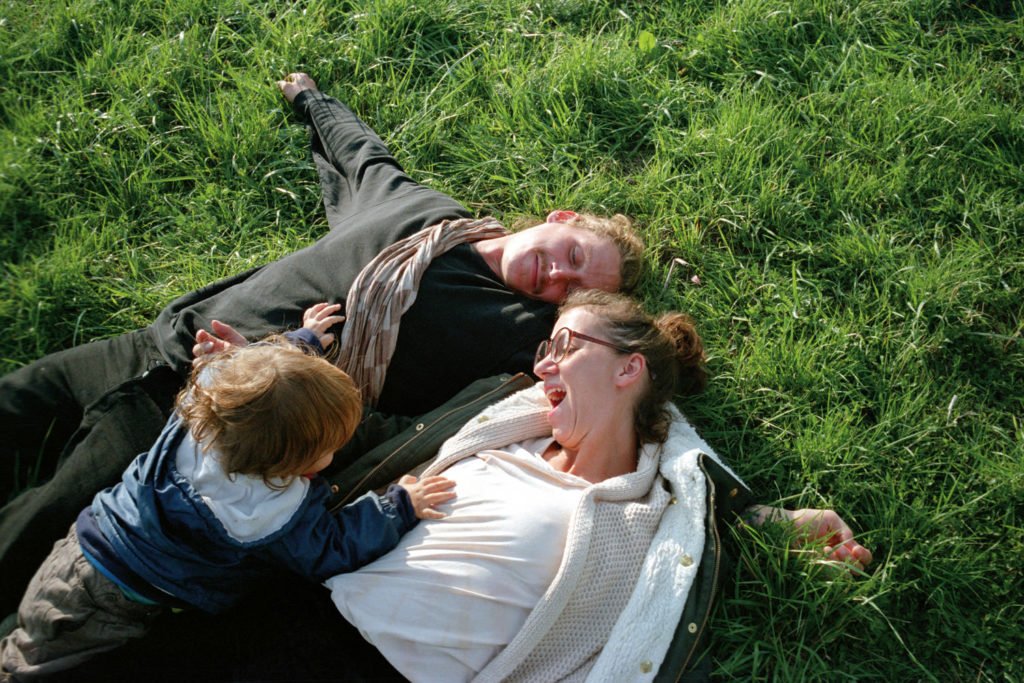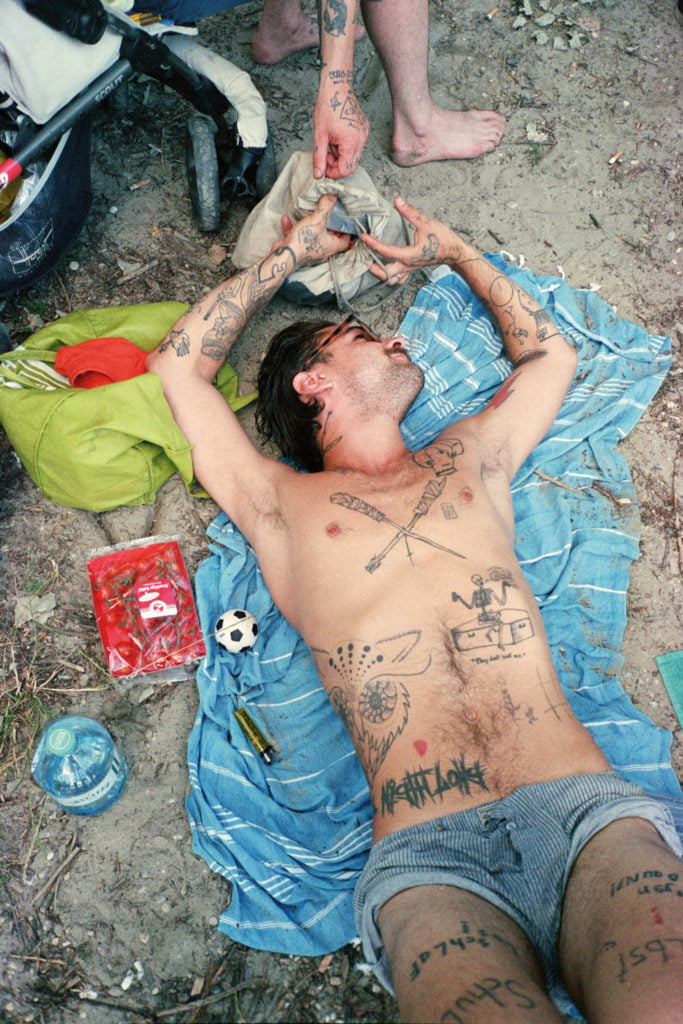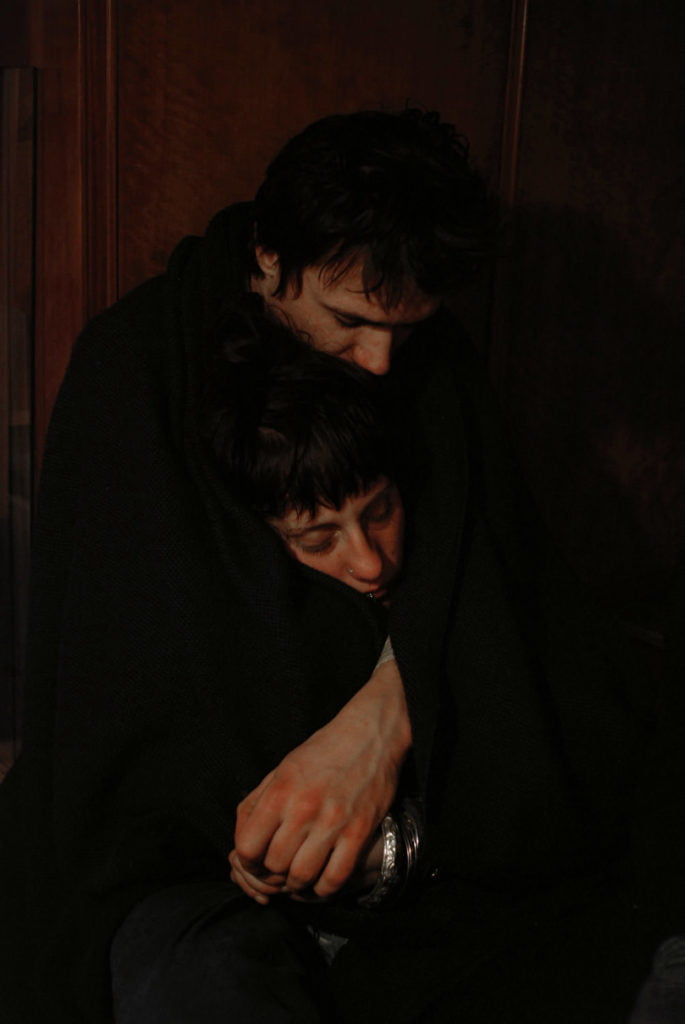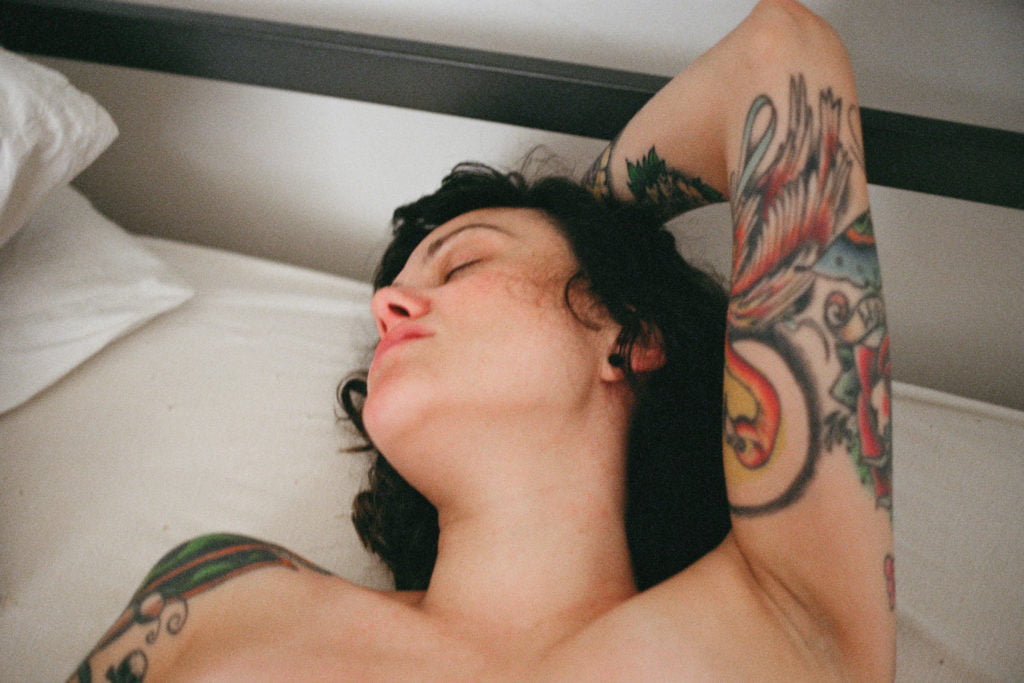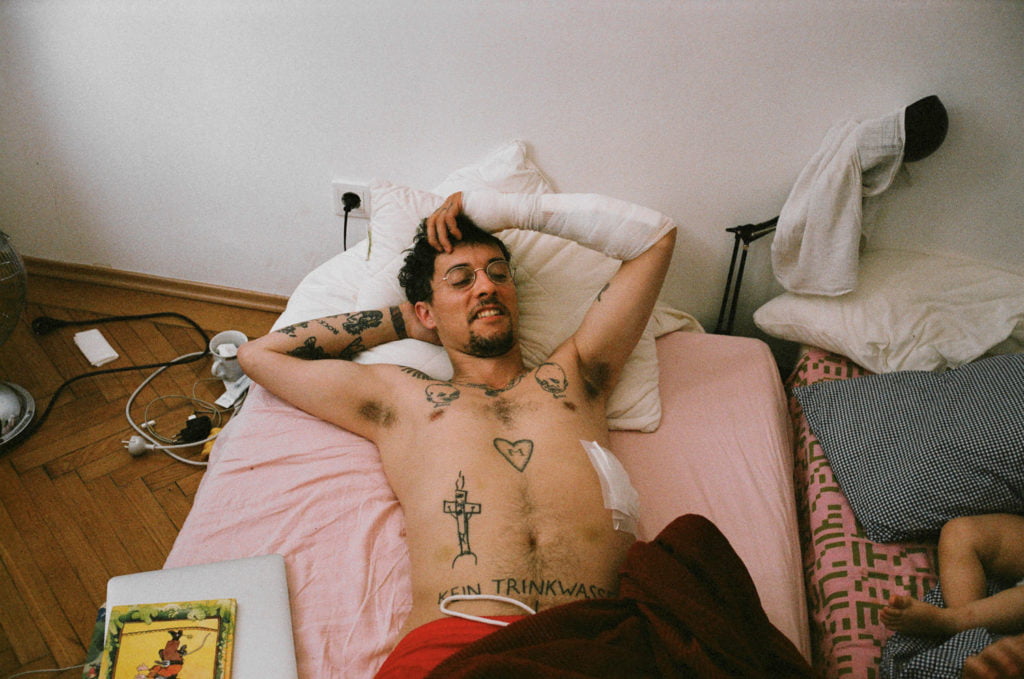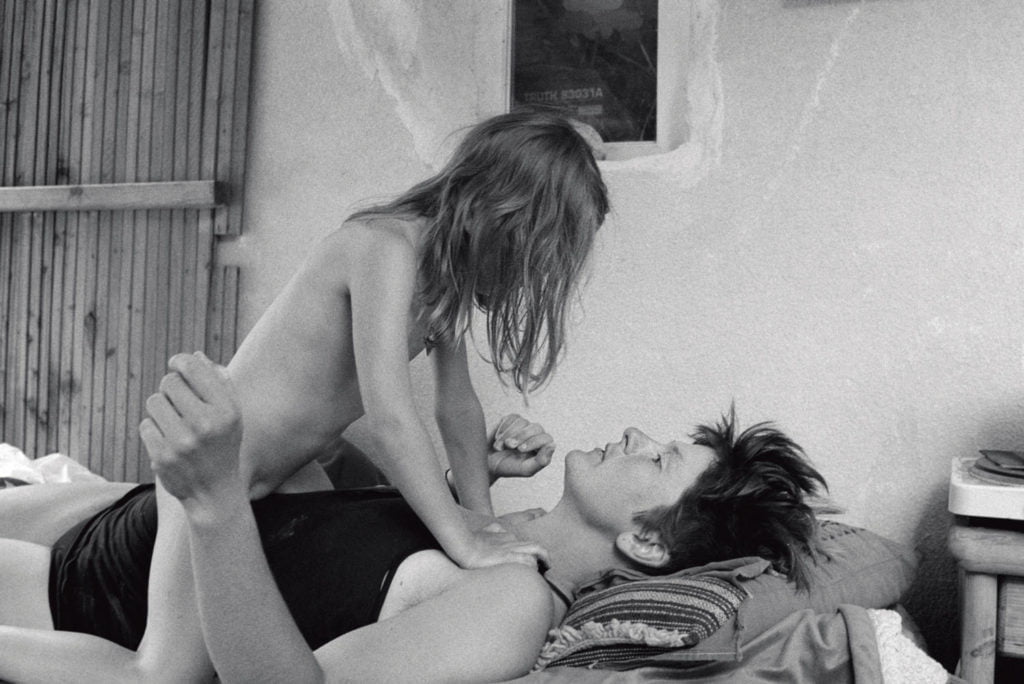Jan Schiefermair
It would seem at first sight as if I operate in very different worlds. But it’s one and the same world, one with scope for a diversity of different life plans. I find that thrilling; and sometimes I take my camera along with me.
Jan Schiefermair
Jan Schiefermair, geboren 1986 in Niederösterreich, lebt und arbeitet die meiste Zeit in Wien.
www.janschiefermair.com
Two young men are sitting, lying in a street, one with a beer in his hand; it is dark, and no doubt late at night. There is a third person there, but all we see are their legs projecting into the picture from the bottom right, and a skateboard, upside down. Somehow the night has peaked, but going home is not an option. Presumably, walking might also be a tad tricky right now. Who wants to leave anyway?
The young Viennese photographer Jan Schiefermair offers us an insight into his social environment, showing us his circle of friends, his family, his home, himself. With his series entitled homesweethole Schiefermair has created a scene portrait from a very personal viewpoint. He does so as part of a photographic tradition that has shaped protagonists such as Larry Clark and Nan Goldin. He is part of that; he is part of a Viennese subculture that consists of a large circle of friends in which skateboarding plays an important role – perhaps more so in the past than it does today. There is a great deal of empathy to Schiefermair’s gaze (his preference is for analogue photog- raphy, in both black-and-white and colour). These are people aged around thirty who have been partying, drinking, doing drugs, skateboarding and living together for many years – defying conventions together. Skateboarding also defines itself as ideology here; it’s a matter of redefining predefined structures (such as the urban architecture) for oneself, of not subordinating oneself. Fear and pain are not categories. Obstacles become opportunities for taking off. It’s all about freedom.
In just a few weeks a couple of friends managed to build a temporary stake park on a disused motorway slip road, taking turns to work in DIY shifts (without official approval, naturally). With its lack of aesthetic self-consciousness the compilation of black-and-white photographs Schiefermair uses to document the project conveys the spirit of this collective endeavour.
But besides these tales of parties and adventures the series of photographs Schiefermair took during 2016 also tells the story of trust, first and foremost, but also of a sense of community, and love. The photographer deliberately showcases images like the one of an intoxicated friend lying on the ground, with naked torso, arms stretched out wide in front of him (the fallen angel), in a diptych with the photograph of a couple lying in a meadow with their toddler, demonstrating their young domestic bliss in a way that is almost kitschy. With homesweethole Schiefermair Schiefermair seeks to counter that apparent contradiction and depict the breadth and diversity of his life’s reality. The anti- hierarchical attitude within the community is apparent also in the acceptance of the changing realities of life within the group – and that is freedom.
Verena Kaspar-Eisert, born in 1981, studied art history in Vienna. Since 2014 she has been the curator at the Kunsthaus Wien.

